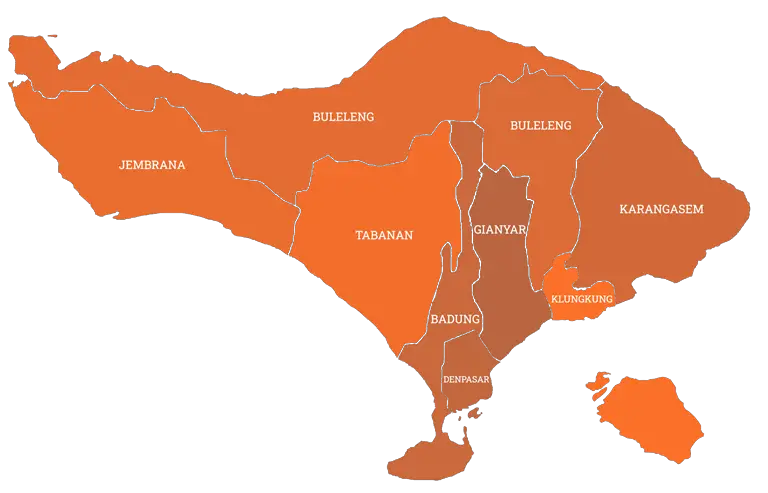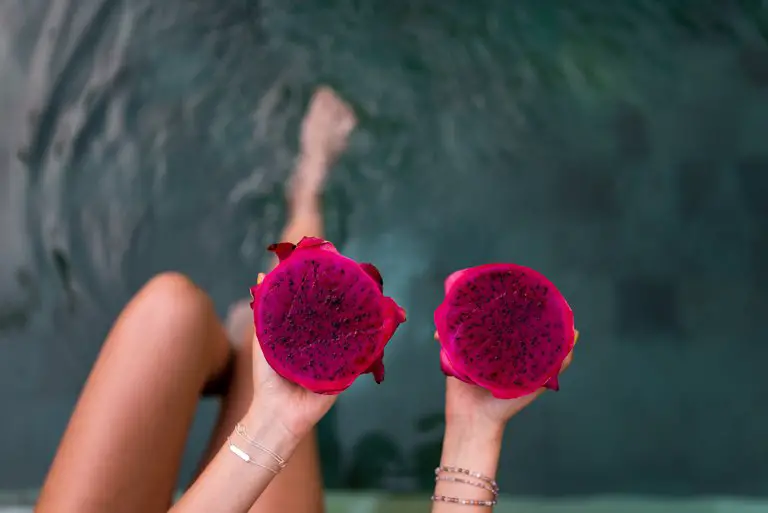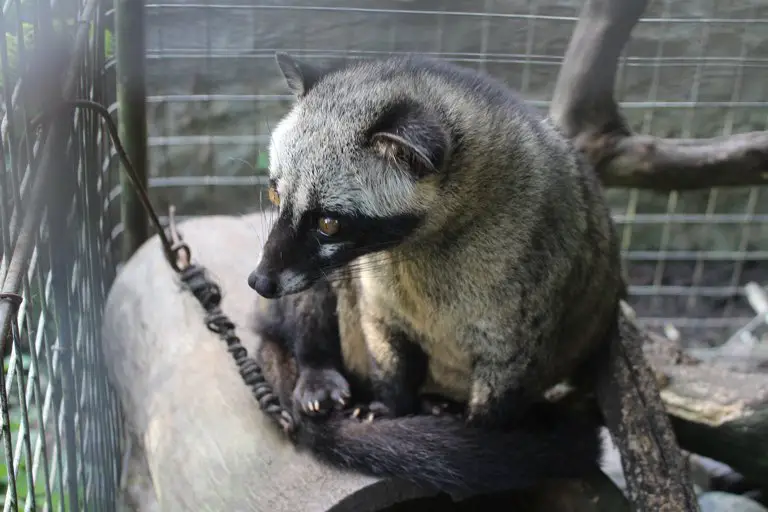GENERAL INFORMATION ABOUT THE ISLAND
The island of Bali is one of Indonesia’s best-known islands and most touristic destinations in the latest years. Bali is a tropical island where you can find active volcanoes and beautiful beaches, wild animals and a lot of plants. Before traveling to Bali, you should know some useful information like its location, its geography, the regions it is divided into, the island economy base and also a little bit of its history. On this page you will find detailed information about each one of these useful topics for your visit to the Island of the Gods.
LOCATION
Bali island is situated in Southeast Asia, in the Indonesian archipelago and is one of the 17.000 islands that belong to Indonesia. Bali is located in the westernmost part of the Lesser Sunda Islands and its neighbours are the islands of Java (in the west) and Lombok (in the east). The Strait of Bali, in the west of the island, separates Bali from Java and is about 3 km wide. In the east, the Lombok Strait, separates Bali from the island of Lombok and is between 20 and 40 km wide. Through the Lombok Strait passes the Wallace Line, the imaginary boundary between Asia and Oceania. Also, Bali neighbors the islands of Nusa Penida, Nusa Lembongan and Nusa Ceningan, which are separated by the Badung Strait. Bali is bordered in the north by the Bali Sea and in the south by the Indian Ocean.
Geography
Bali has an area of 5780 km, a length of 140 km from East to West, and 90 km from North to South. Located 8° south of the equator, and Although it is not a very large island, the Balinese share it with the large number of tourists that visit the island throughout the year.
Besides the island of Bali, the province of Bali also includes some smaller islands located around the main island. These islands are the three Nusa: Nusa Penida, Nusa Lembongan, and Nusa Ceningan, situated in the south-east of Bali, the island of Menjangan in the north-west and the island of Serangan in the south. All these islands can be reached by boat, except the last one, Serangan, which is accessible by a road that connects with Bali.
Bali has an extensive mountain chain that runs from east to west, and its highest peak is Mount Agung with an altitude of 3142 m. Besides of being Bali’s highest peak, Mount Agung is an active volcano that last erupted on June 13, 2019. This mountain range divides the island into two very different parts: the north of Bali is a fairly steep slope with a fine coastline of black beaches and the south is flat with white beaches.
With a total land area of almost 6,000 square kilometres and a population of about four million, Bali is one of the most densely populated territories in Indonesia.
Capital of Bali
Denpasar, the capital of Bali, is a bustling city in the south of the island. Denpasar is the largest city in Bali and has approximately 800,000 inhabitants. Denpasar is also the main gateway to Bali as the only airport on the island, Ngurah Rai, is located outside the city. Denpasar means “north of the market” and is Bali’s main city for commerce. In Denpasar you can find all the public institutions in charge of the island’s management and also all the universities.
Regions of Bali
The island of Bali is divided into nine regencies (regions): Badung (an area stretching from the center of the island to the south), Bangli (Centre), Buleleng (North), Denpasar (in the South), Gianyar (in central Bali), Jembarana (West), Karangasem (East), Klungkung (South East and Nusa Penida Island) and Tabanan (Centre). Each of these regions is also divided into several districts. In Bali it is quite challenging to establish the boundaries of cities and towns, and therefore it is easier to guide yourself by the districts.

Economy
Bali has a population of about 4 million people. The main cities of the island are the capital, Denpasar, Singaraja (in the north), and the town of Ubud (north of Denpasar), known as the cultural center of Bali. The main touristic areas of the island are Ubud, Kuta, Sanur, Jimbaran, and Nusa Dua.
The majority of the inhabitants in Bali dedicate their lives to agriculture, mainly to rice cultivation, but they also produce coffee, fruit, and vegetables. Many of the balinese are also engaged in fishing, livestock farming or crafts.
Tourism is the main source of income for the balinese people. Many balinese families run hotels, guesthouses, restaurants or travel and tourism agencies. Handicrafts, painting, and sculpture also provide quite a bit of income for the people in Bali and there are many artists living on the island.
Flora and Fauna
As a tropical island, Bali is characterised by a great variety of plants that make the predominant colour on the island the green. There are also a lot of animals and some of the species are unique in Indonesia and can only be found in this country.
The predominant trees on the island are the banyan tree that can be seen almost everywhere, the tamarind, a plant used for cooking, the figs, and palm trees. Cocoa and coffee are among the many products exported from Bali. Dragon fruit is one of Bali’s most popular fruits, but there is a wide variety of tropical fruits on the island.

Besides the plants, there is also a great variety and quantity of flowers. The begonias and the cordylines can be found in most part of the island. Jasmine and frangipani (plumeria) are two of the most common flowers in Bali that can be seen everywhere and they are the scent of Bali. The extract of these flowers is used to make essential oils and aromatherapy candles among other things. Plumeria is the symbol of Bali and is used to decorate temples, offerings and even hotel rooms. Balinese girls also use them as hair decorations for ceremonies.
Orchids can also be seen quite a bit on the island. You can find them in gardens, at the temples entrances, or even on the roadways.
The fauna is also very abundant on the island. Although they are the best known and most prevalent animals in Bali, the monkeys are not the only ones that inhabit this island. The luwak is one of the protagonists in Bali and is the animal that helps with the production of the most expensive coffee in the world. The luwak is an animal that looks like a combination between a cat and a ferret. This furry animal eats the coffee beans, its body processes the fleshy part and expels the whole grain after digestion. You won’t find luwak everywhere on the island, but you can see them around coffee plantations.

There are also more common animals such as pigs, cows, ducks, buffaloes, and birds of all kinds. Lizards can also be seen everywhere, and you will see that they like to stick to the ceilings. In caves and even in some temples, there are bats. If you are afraid of bats, don’t worry because it is not common to see them on the street and the places where they are found are usually marked.
As mentioned above, you can also see monkeys on the island. Long-tailed macaques are the most common and you will see them at Monkey Forest in Ubud, but also on the surrounding streets and in some temples, especially in Uluwatu.
Under the waters of the Indian Ocean, there is an excellent variety of marine animals. If you dive or snorkel, you will see many types of fish of all colors, turtles and starfish, corals and shellfish. Dolphins, sharks, and rays can also be seen in some areas of Bali and nearby islands.
A brief history of Bali
The first prehistoric tourists arrived on the island of Bali around 2.000 BC. Still, it was only around the 9th century that a community began to develop around the rice fields. With the arrival on the Island of the Gods of hindu kings of Majapahit, expelled from Java by the advance of Islam on the island, the balinese culture began to develop. It was the priest Nirartha who brought to the island the traditions of balinese hinduism. In the 19th century, the dutch started to formalise alliances with the princes of the northern region of the island and after that they invaded Bali.
In 1904, a dispute over the loot of shipwrecks triggered a massacre called puputan (collective suicide). About 4000 Balinese preferred to commit suicide rather than suffer the humiliation of being defeat by the dutch troops. The nobility of Denpasar, with their best clothes on, set fire to their palaces and threw themselves into the dutch cannons. In later years, the rich and complex balinese culture was promoted by the same dutch officers. Two years later, a new invasion led to a second puputan. In the 1930s, the international interest for tourism in Bali began to emerge and the first western tourists began to arrive. In the early 1970s, the increase of tourism on the island came with many changes and improvements of roads, telecommunications, education and health systems began. Although tourism on the island has brought many changes to society and also has caused environmental damage, the balinese have managed to maintain their culture and traditions.


